Analytics engineers are experiencing a major shift in their daily work as artificial intelligence transforms how they handle data. Traditional tasks like writing complex SQL queries, building data pipelines, and creating reports are becoming faster and more automated thanks to AI tools.

Generative AI is fundamentally changing analytics engineering by automating routine coding tasks, enabling natural language data queries, and allowing professionals to focus on strategic decision-making rather than manual data manipulation. AI is creating new roles and skills that require different expertise than traditional analytics work.
The role is evolving from hands-on coding to strategic oversight and AI supervision. Analytics engineers now spend more time validating AI outputs, designing governance frameworks, and solving complex business problems. This shift affects everything from data preparation and workflow automation to compliance management and career development paths across different industries.
Key Takeaways
- Generative AI automates routine analytics tasks like SQL generation and pipeline creation, making analytics engineers more productive
- The role is shifting from manual coding to strategic oversight, requiring new skills in AI validation and governance
- Analytics engineers must adapt by learning to work with AI tools while maintaining data quality and compliance standards
Generative AI’s Impact on Analytics Engineers

Generative AI is transforming how analytics engineers approach their daily work, shifting their focus from manual coding to strategic oversight and collaboration. Generative AI is changing the role of data engineers through code generation, pipeline automation and real-time debugging, creating new opportunities for analytics professionals to work more efficiently with their technical counterparts.
Changing Responsibilities
Analytics engineers now spend less time writing repetitive SQL queries and data transformation code. Generative AI tools automate many routine tasks that previously consumed hours of manual work.
Their role has evolved to include:
- AI prompt engineering for data analysis tasks
- Quality assurance of AI-generated code and insights
- Strategic data modeling decisions rather than implementation details
Analytics engineers must now understand how to effectively communicate with AI systems. They create detailed prompts that generate accurate SQL queries, data visualizations, and analytical reports.
The focus shifts from technical execution to analytical thinking and validation. Engineers spend more time interpreting results, identifying data quality issues, and ensuring AI outputs meet business requirements.
This change requires new skills in AI tool management and prompt optimization. Analytics engineers become orchestrators of AI capabilities rather than solely hands-on developers.
Collaboration With Data Scientists and Data Engineers
Generative AI is making a profound impact on data engineering teams by automating and enhancing various aspects of data preparation, analysis, and reporting. This automation creates new collaboration patterns between analytics engineers and their technical colleagues.
Data scientists now work more closely with analytics engineers to validate AI-generated models and insights. Analytics engineers help translate business requirements into prompts that data scientists can use for model development.
Data engineers collaborate with analytics engineers to ensure AI-generated pipelines meet performance and reliability standards. They jointly review automated code for security vulnerabilities and optimization opportunities.
Cross-functional teams emerge where analytics engineers serve as translators between business stakeholders and technical teams. They help data scientists understand business context while helping data engineers prioritize infrastructure needs.
The collaboration extends to shared responsibility for AI governance. All three roles work together to establish guidelines for AI tool usage, data privacy, and model validation across the organization.
Increased Efficiency and Productivity
Analytics engineers experience significant productivity gains through AI-powered automation. Tasks that previously took days now complete in hours or minutes.
Code generation accelerates development cycles:
- SQL query creation becomes 3-5x faster
- Data transformation logic generates automatically
- Documentation writes itself from code comments
Error reduction improves work quality. AI tools catch syntax errors, suggest optimizations, and identify potential data quality issues before they impact downstream systems.
Analytics engineers can now handle larger project volumes with the same team size. They focus on high-value activities like stakeholder communication, requirement gathering, and strategic planning.
Real-time debugging capabilities allow faster problem resolution. AI tools analyze error logs, suggest fixes, and even implement corrections automatically in many cases.
The time savings enable analytics engineers to take on more strategic initiatives. They can explore new data sources, develop advanced analytics capabilities, and provide deeper business insights to stakeholders.
For those looking to develop these skills, consider exploring our analytics engineering course or practice with real-world exercises and quizzes.
Redefining Data Preparation and Transformation
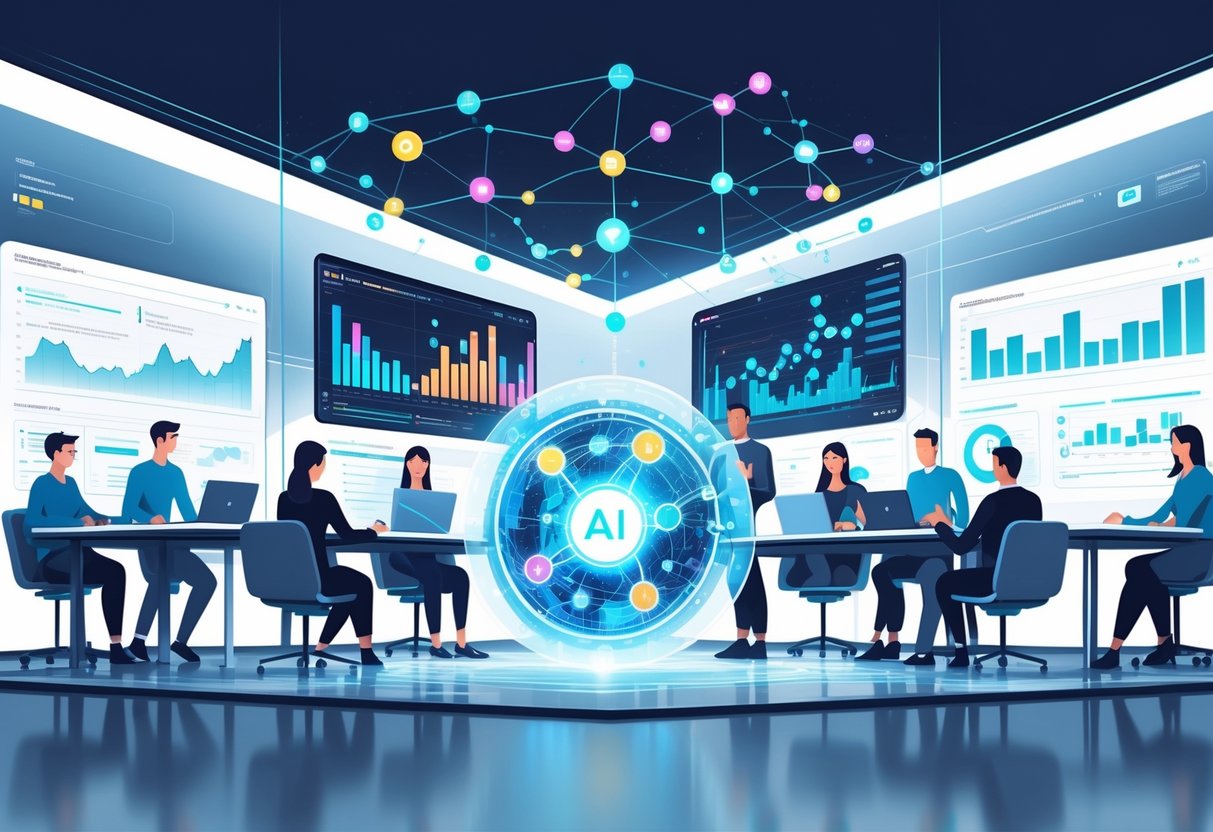
Generative AI transforms the most time-consuming aspects of analytics engineering by automating data cleaning processes and accelerating transformation workflows. These tools now generate high-quality synthetic datasets that help engineers test pipelines and fill data gaps without manual coding.
Automating Data Cleaning
Generative AI automates routine data cleaning tasks that previously required hours of manual work. Analytics engineers can now identify missing values, detect outliers, and standardize formats using AI-powered tools.
The technology recognizes patterns in messy data and suggests corrections automatically. It flags inconsistent naming conventions, duplicate records, and formatting errors across large datasets.
Key automation capabilities include:
- Detecting null values and data type mismatches
- Identifying duplicate records across multiple columns
- Standardizing date formats and text casing
- Flagging statistical outliers and anomalies
AI tools learn from previous cleaning decisions to improve accuracy over time. They apply consistent rules across similar datasets, reducing human error and saving significant preparation time.
Accelerating Data Transformation
Natural language interfaces allow data engineers to describe transformations in plain English with AI generating the necessary code automatically. This approach eliminates the need to write complex SQL queries or Python scripts for common transformation tasks.
Analytics engineers can request operations like “combine customer data from three tables” or “calculate monthly revenue trends.” The AI interprets these requests and produces executable code in the required programming language.
Common transformation accelerations:
- Join operations: Combining datasets based on natural language descriptions
- Aggregations: Creating summaries and calculated fields automatically
- Pivot operations: Restructuring data layouts without manual coding
- Window functions: Generating time-series calculations and rankings
The generated code includes proper error handling and optimization techniques. Engineers can review and modify the output before implementation, maintaining control over the final transformation logic.
Generation of Synthetic Datasets
AI generates synthetic data to fill missing values and create realistic test datasets for pipeline development. This capability proves essential when working with incomplete historical data or privacy-sensitive information.
Synthetic datasets maintain statistical properties of original data while protecting individual privacy. They preserve correlations, distributions, and seasonal patterns that analytics engineers need for accurate testing.
Synthetic data applications:
| Use Case | Benefit | Example |
|---|---|---|
| Pipeline testing | Safe development environment | Customer transaction simulations |
| Missing data gaps | Complete historical records | Revenue data for closed periods |
| Privacy protection | Anonymized analysis datasets | Healthcare records for research |
The generated datasets scale to match production volumes without revealing sensitive information. Analytics engineers can validate transformation logic and performance using realistic data that mirrors actual business scenarios.
Modern synthetic data generators create complex relationships between variables. They produce time-series data with proper seasonality and maintain referential integrity across related tables.
For hands-on practice with data preparation and transformation, try our analytics engineering exercises or explore premium projects.
Modernizing Data Engineering Workflows

Generative AI is transforming how data engineers approach pipeline design, documentation, and maintenance processes. The technology automates tedious manual tasks while enabling engineers to focus on higher-value strategic work through intelligent ETL processes and automated validation systems.
Streamlined Data Pipelines
Generative AI simplifies data pipeline construction by automatically generating configuration files and connection scripts. Engineers can describe their requirements in plain language, and AI tools translate these into executable pipeline code.
The technology reduces pipeline development time from weeks to days. It automatically suggests optimal data flow patterns based on source systems and target destinations.
Key pipeline improvements include:
- Automatic schema mapping between systems
- Smart data routing based on business rules
- Real-time pipeline monitoring and alerts
- Self-healing capabilities for common failures
AI-powered tools also generate comprehensive documentation for each pipeline component. This eliminates the manual documentation burden that often gets skipped during tight project deadlines.
Pipeline versioning becomes more manageable with AI assistance. The technology tracks changes across multiple environments and suggests rollback strategies when issues arise.
AI-Assisted ETL Processes
Generative AI automates many tedious but manual ETL processes, freeing engineers’ time for higher value tasks. The technology handles data extraction by automatically detecting source system changes and adapting extraction logic accordingly.
Transformation logic becomes more intelligent through AI pattern recognition. The system learns from existing transformation rules and suggests optimizations for new data sources.
ETL automation capabilities:
- Dynamic source system discovery
- Intelligent data type conversion
- Automatic handling of schema evolution
- Performance optimization recommendations
Loading processes benefit from AI-driven scheduling and resource allocation. The technology predicts optimal load windows based on system usage patterns and data volumes.
Error handling improves significantly with AI assistance. Systems can automatically retry failed operations with adjusted parameters or route problematic records to exception queues for manual review.
Automation in Data Validation
AI transforms data validation from reactive checking to proactive quality assurance. Machine learning algorithms establish baseline data patterns and automatically flag anomalies that deviate from expected norms.
Validation rules adapt dynamically as data patterns evolve. Traditional static rules often break when business processes change, but AI-powered validation learns from new patterns continuously.
Automated validation features:
- Statistical anomaly detection
- Business rule validation
- Data freshness monitoring
- Cross-system consistency checks
The technology generates validation reports that highlight data quality trends over time. Engineers receive actionable insights about which data sources require attention rather than generic error lists.
Remediation suggestions accompany validation failures. AI analyzes error patterns and recommends specific fixes, reducing the time spent investigating data quality issues.
Real-time validation enables immediate feedback to upstream systems. This prevents bad data from propagating through multiple downstream processes before detection occurs.
Explore premium analytics engineering projects for real-world workflow automation scenarios, including data pipeline automation and ETL optimization.
Natural Language Processing and Large Language Models
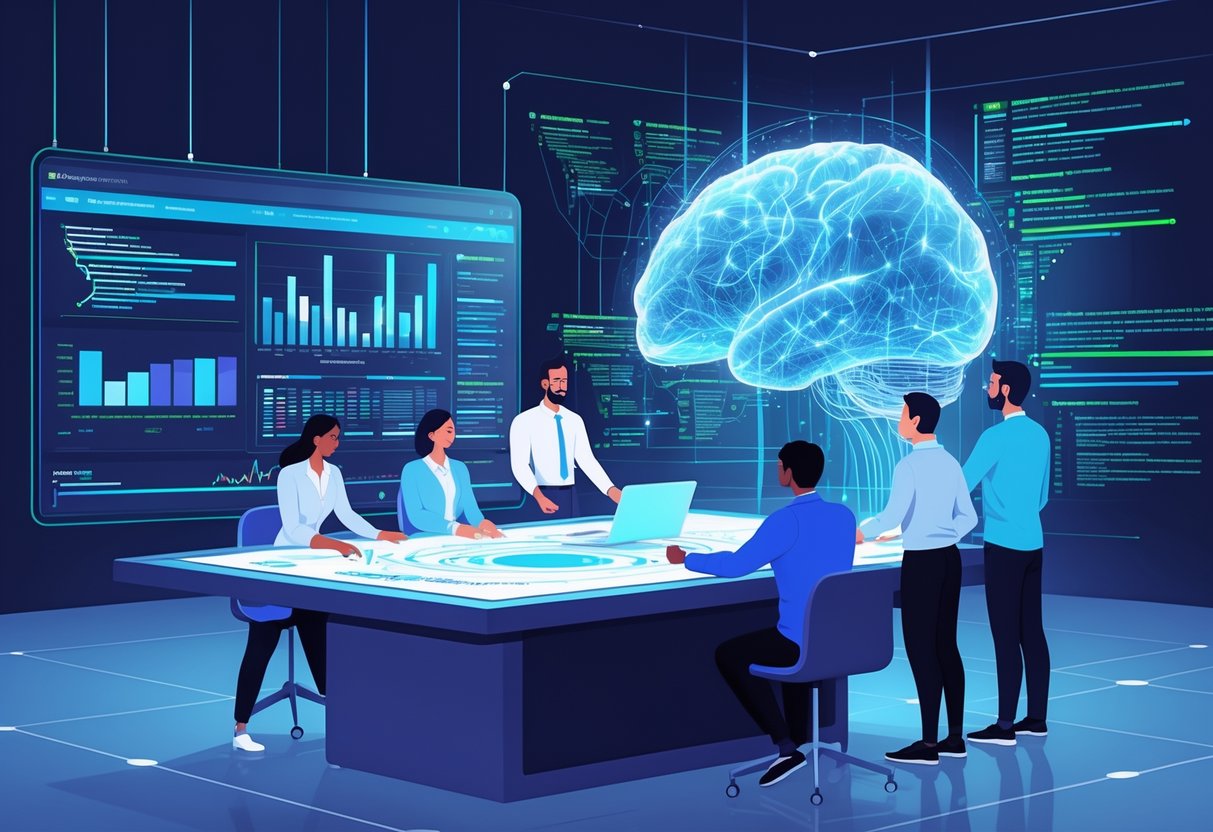
Natural language processing and large language models are transforming how analytics engineers interact with data systems. These technologies enable direct communication between humans and databases using everyday language instead of complex code.
Enabling Natural Language Queries
Analytics engineers can now query databases using plain English instead of writing SQL code. Large language models process natural language and convert questions into database queries automatically.
This capability reduces the time spent writing complex queries. Engineers can ask “Show me sales data for the last quarter” instead of writing multi-line SQL statements.
Key benefits include:
- Faster query creation
- Reduced syntax errors
- More intuitive data exploration
- Less time debugging code
NLP systems understand context and meaning behind requests. They can handle follow-up questions and maintain conversation flow across multiple queries.
Democratizing Data Access
Large language models make data accessible to non-technical team members. Business users can interact with analytics platforms without learning SQL or programming languages.
Analytics engineers benefit from reduced ad-hoc request volume. Team members can find answers independently instead of requesting custom reports.
User groups that gain access:
- Marketing teams analyzing campaign performance
- Sales managers tracking revenue metrics
- Product managers reviewing user engagement
- Executives monitoring key performance indicators
The technology handles different question styles and business terminology. Users can ask questions using their domain-specific language without technical translation.
If you’re ready to advance your skills with hands-on practice, check out our analytics engineering quizzes and deep-dive exercises.
Advancements in NLP for Evolving Data Tasks
Recent advances in generative AI and NLP are expanding beyond basic query translation. Modern systems can generate documentation, create data pipelines, and suggest optimization strategies.
Analytics engineers use these tools for automated code review and documentation generation. LLMs can analyze existing code and produce clear explanations for maintenance purposes.
Emerging capabilities include:
- Automatic data quality checks
- Pipeline monitoring descriptions
- Error message interpretation
- Performance tuning recommendations
These advancements help engineers focus on strategic work rather than routine tasks. The technology handles repetitive documentation and basic troubleshooting automatically.
Automating Reporting and Visualization
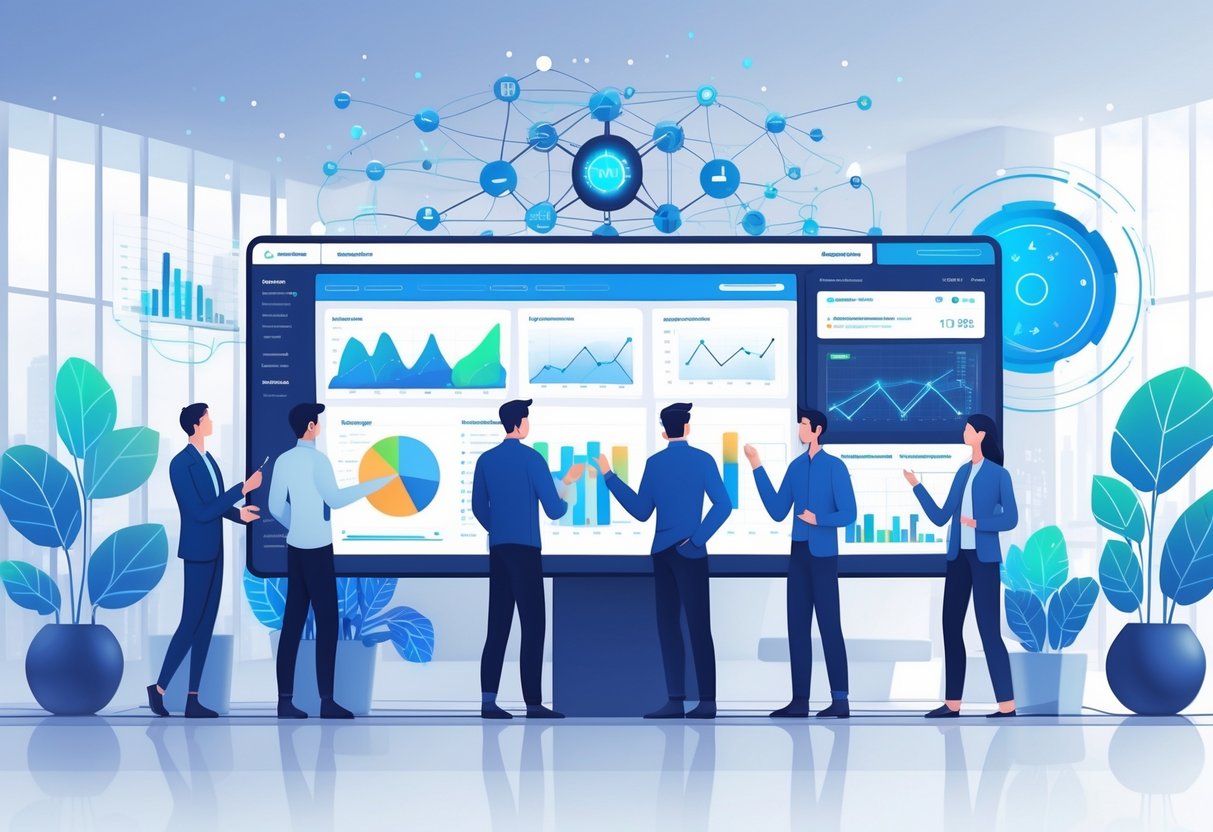
Generative AI transforms how analytics engineers create reports by automatically generating summaries and insights from complex datasets. The technology also enables the rapid development of interactive dashboards that respond to natural language queries and adapt to user needs.
Automated Report Generation
Analytics engineers now leverage generative AI to accelerate data analysis by automating basic insights and summaries. This shift allows professionals to focus on strategic planning rather than spending time crafting explanations.
The technology excels at creating different types of content for reports:
- Text summaries of key findings and trends
- Visual presentations of data patterns
- Performance descriptions in standardized formats
Corporate reporting benefits significantly from AI’s ability to create videos, text, and images for narrative creation and analytics tasks. Engineers can now process large datasets and generate comprehensive reports in minutes rather than hours.
Modern AI systems analyze data patterns automatically. They identify outliers, correlations, and seasonal trends without manual intervention. This automation reduces human error and ensures consistent report quality across different time periods and datasets.
Development of Interactive Dashboards
Automated business data visualization is advancing rapidly, enabling dashboards that process user queries in natural language and generate appropriate visualizations instantly. Analytics engineers can now build dashboards that respond intelligently to user requests.
Interactive dashboards powered by generative AI offer several key capabilities:
| Feature | Traditional Approach | AI-Enhanced Approach |
|---|---|---|
| Query Method | Pre-built filters | Natural language |
| Visualization Creation | Manual coding | Automatic generation |
| Data Exploration | Fixed views | Dynamic adaptation |
Engineers create dashboards that understand context and user intent. Users can ask questions like “show me sales trends for the last quarter” and receive instant visualizations. The AI interprets the request, retrieves relevant data, and selects the most appropriate chart type.
Data visualization tools now utilize generative AI to bridge data gaps and enhance robustness while maintaining data security. This technology balances analytical accuracy with user accessibility through intuitive interfaces.
Improving Data Integration and Ingestion
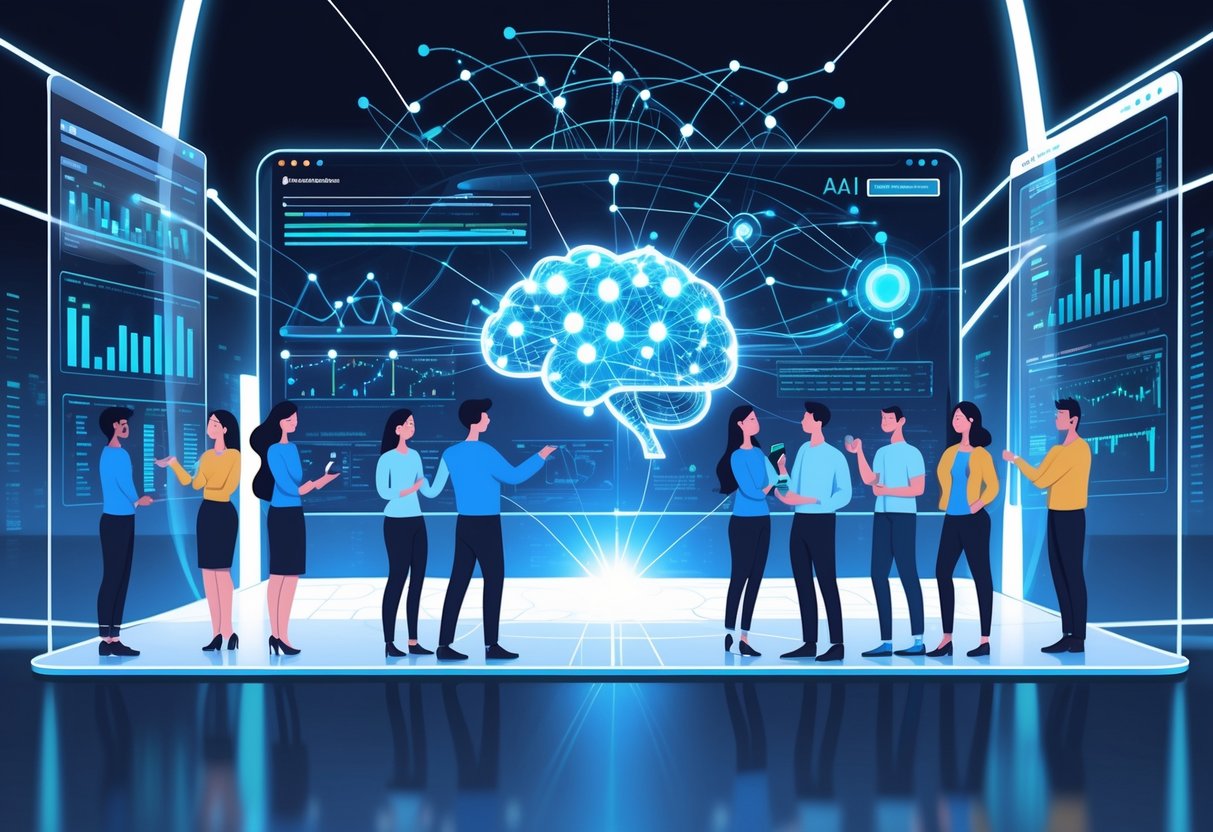
Generative AI transforms how analytics engineers handle data integration by automating complex mapping processes and streamlining API connections. AI-powered tools now extract data from unstructured sources like documents and images with greater accuracy than traditional methods.
Seamless API Integration
Generative AI simplifies API integration by automatically generating connection code and handling authentication protocols. Analytics engineers can describe their data requirements in plain language, and AI tools create the necessary API calls and error handling logic.
Modern AI assistants analyze API documentation and generate Python or SQL code for data extraction. They identify the correct endpoints and parameters needed for specific data sources. This reduces the time spent reading documentation from hours to minutes.
Key Benefits:
- Automatic code generation for REST and GraphQL APIs
- Built-in error handling and retry logic
- Real-time data validation during ingestion
AI tools also monitor API changes and suggest code updates when endpoints are modified. This prevents data integration processes from breaking unexpectedly.
Enhancements in Data Mapping
AI-powered data mapping tools automatically identify relationships between source and target systems. They analyze column names, data types, and sample values to suggest the best mapping configurations.
These tools use machine learning to recognize patterns in data structures. They can match fields with different names but similar content, such as “customer_id” and “cust_num.” This eliminates much of the manual work in mapping processes.
Common Mapping Improvements:
- Automatic field matching based on content similarity
- Data type conversion suggestions
- Duplicate detection across multiple sources
- Schema evolution handling
Generative AI also creates documentation for mapping decisions. It explains why certain fields were matched and suggests alternative mappings when confidence levels are low.
Applications of OCR in Data Ingestion
OCR technology powered by generative AI extracts structured data from documents, invoices, and forms with high accuracy. Analytics engineers can now include paper-based sources in their data pipelines without manual data entry.
Modern OCR systems understand document layouts and extract specific fields like dates, amounts, and customer names. They handle various document formats including PDFs, images, and scanned files.
OCR Capabilities:
- Invoice processing with line-item extraction
- Form data capture from surveys and applications
- Table recognition in research documents
- Handwritten text interpretation
AI-enhanced OCR systems learn from corrections and improve accuracy over time. They integrate directly with existing data pipelines, converting unstructured documents into structured datasets automatically.
Elevating Data Governance and Compliance
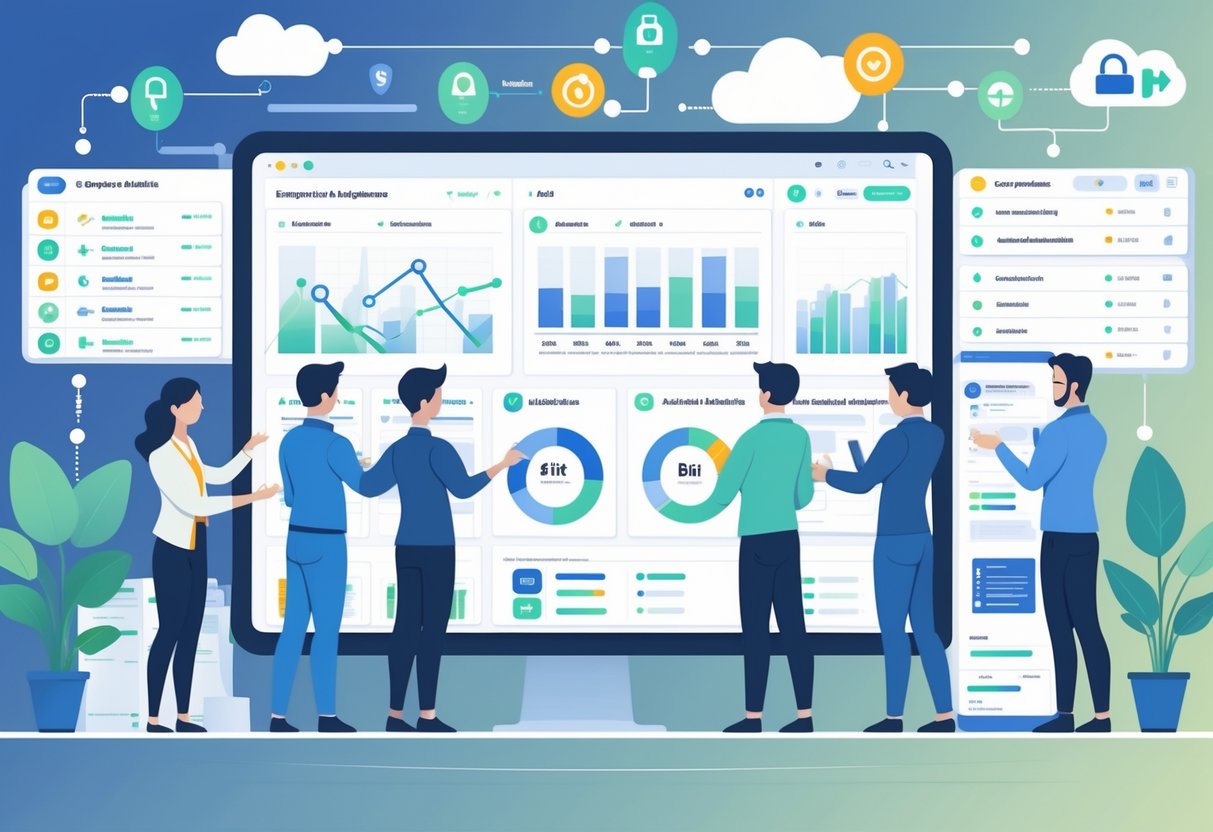
Generative AI introduces complex data privacy challenges that require analytics engineers to implement new safeguards for sensitive information processing. Regulatory frameworks like GDPR demand enhanced monitoring and consent management across AI-powered analytics workflows.
Data Privacy Challenges
Analytics engineers face significant obstacles when implementing generative AI systems that process personal data. Traditional data masking techniques often prove inadequate for AI models that can infer sensitive information from seemingly anonymous datasets.
AI can play a significant role in automating monitoring activities for data quality checks and policy enforcement. However, this automation creates new privacy risks when models inadvertently expose protected information through their outputs.
Key privacy challenges include:
- Model training on personally identifiable information
- Unintended data leakage through AI-generated content
- Cross-border data transfers in cloud-based AI systems
- Difficulty in implementing data subject deletion requests
Analytics engineers must establish robust data lineage tracking to monitor how personal data flows through AI pipelines. This requires implementing technical controls that can identify and flag sensitive data at every processing stage.
The complexity increases when dealing with unstructured data like text, images, and audio files that may contain hidden personal information.
Ensuring Regulatory Compliance
Organizations are calling for an integrated platform to address data security, governance, and compliance collectively, with 95% of leaders prioritizing unified teams and tools.
Analytics engineers must adapt their compliance frameworks to handle AI-specific requirements. Traditional compliance measures focused on structured data storage and processing no longer suffice for generative AI applications.
Critical compliance areas include:
- Model bias detection and mitigation
- Algorithmic transparency reporting
- Data retention policy enforcement
- Audit trail maintenance for AI decisions
Engineers need to implement continuous monitoring systems that can detect compliance violations in real-time. This involves setting up automated alerts for unusual data access patterns or model behavior that could indicate regulatory breaches.
Documentation requirements have expanded significantly. Teams must maintain detailed records of model training data, algorithm choices, and decision-making processes to satisfy regulatory audits.
Addressing GDPR Requirements
GDPR compliance in generative AI environments requires analytics engineers to redesign their data handling processes fundamentally. The regulation’s “right to be forgotten” poses particular challenges when personal data becomes embedded in AI model weights.
Data Governance technical controls must now include specialized capabilities for AI systems, including model lineage tracking and data source identification.
GDPR-specific implementation requirements:
| Requirement | Implementation Strategy |
|---|---|
| Data minimization | Implement differential privacy techniques |
| Purpose limitation | Create isolated model environments per use case |
| Consent management | Deploy granular permission tracking systems |
| Data portability | Build extraction tools for AI-processed data |
Engineers must establish clear data processing lawful bases before training AI models. This involves conducting privacy impact assessments for each generative AI use case and documenting legitimate interests or consent mechanisms.
The challenge intensifies when dealing with synthetic data generated by AI models. Teams must ensure that synthetic datasets don’t inadvertently recreate personal information from training data, requiring sophisticated privacy-preserving techniques and regular validation processes.
Upskilling and Evolving Career Paths
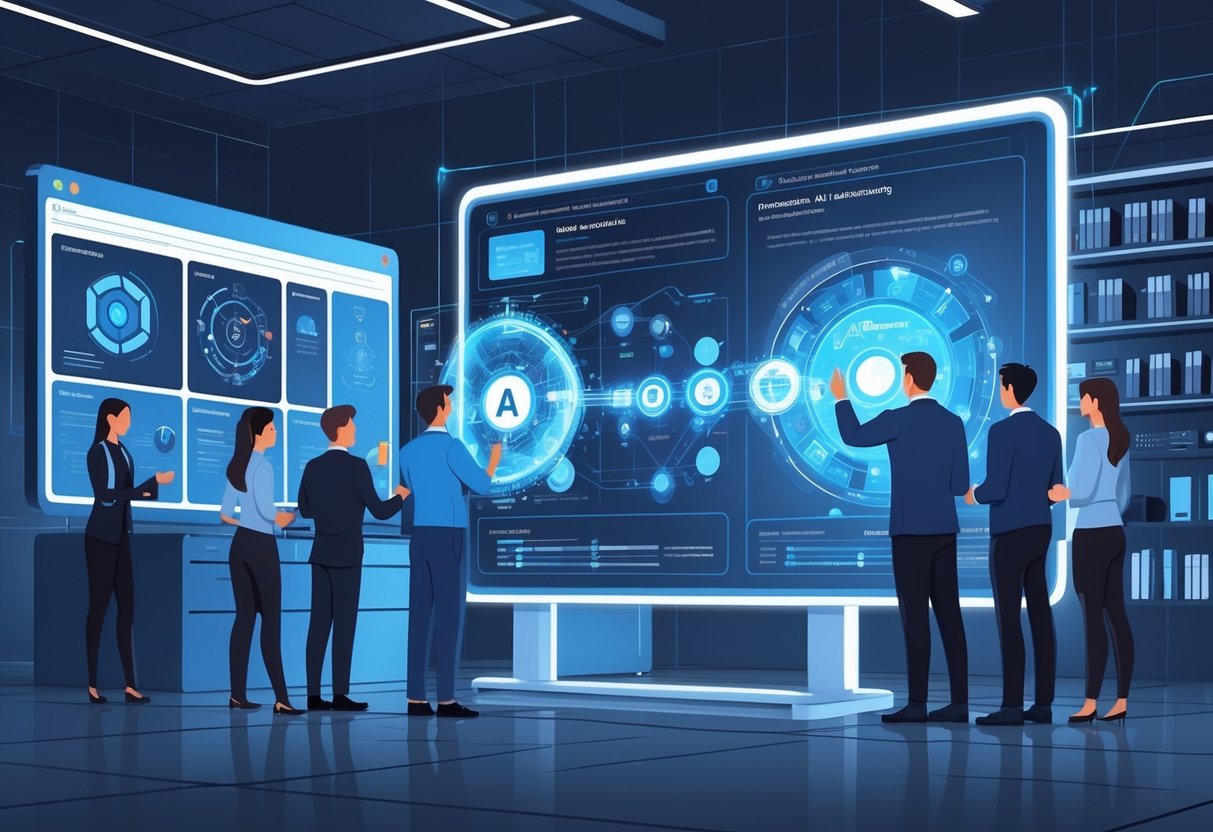
Analytics engineers must develop new competencies in AI fundamentals and prompt engineering while established teams undergo systematic reskilling programs. The transformation creates entirely new positions focused on model governance and ethical AI implementation.
Developing AI and Data Literacy
Analytics engineers need foundational knowledge in generative AI tools and machine learning concepts to stay relevant. AI upskilling opens new career opportunities by equipping professionals with advanced technical skills.
Core AI Skills for Analytics Engineers:
- Prompt engineering and optimization
- Large language model integration
- AI tool evaluation and selection
- Model performance monitoring
Data engineers must understand how generative AI processes data differently than traditional systems. They learn to work with unstructured data feeds and vector databases that support AI applications.
Data scientists expand their expertise to include generative model fine-tuning and evaluation metrics. The shift requires understanding both statistical methods and neural network architectures.
Machine learning knowledge becomes essential for all analytics roles. Professionals learn model training pipelines, feature engineering for AI systems, and automated model deployment processes.
Reskilling Established Teams
Organizations take collaborative approaches to upskilling workforces for generative AI adoption. Companies focus on business outcomes rather than rushing to build AI literacy across all roles simultaneously.
Reskilling Program Components:
- Hands-on workshops with real business data
- Cross-functional team projects
- Mentorship from AI specialists
- Certification in AI tools and platforms
Data engineers participate in intensive training on AI model deployment and infrastructure scaling. They learn containerization, model serving architectures, and monitoring systems for AI applications.
Analytics teams practice prompt engineering through structured exercises. Customer service representatives learn generative AI and chatbots to handle real-time customer questions more effectively.
Established professionals often struggle with rapid technological changes. Human-centered learning approaches transform initial fear into curiosity about AI capabilities.
Emerging Roles: Model Managers and AI Ethicists
New positions emerge specifically to govern and oversee AI implementations within analytics teams. Model Managers handle the lifecycle of AI models from development through retirement.
Model Managers coordinate between data scientists, data engineers, and business stakeholders. They track model performance, manage version control, and ensure compliance with regulatory requirements.
AI Ethicists evaluate bias in datasets and model outputs that affect business decisions. They develop guidelines for responsible AI use and audit existing analytics processes for fairness issues.
These specialists work closely with analytics engineers to implement governance frameworks. They create documentation standards, approval processes, and monitoring systems for AI-powered analytics.
Key Responsibilities Include:
- Risk assessment for AI model deployment
- Bias detection and mitigation strategies
- Stakeholder communication about AI limitations
- Policy development for AI governance
The roles require technical understanding combined with business acumen. Professionals often transition from senior analytics positions or enter from compliance and risk management backgrounds.
Use Cases Across Industries
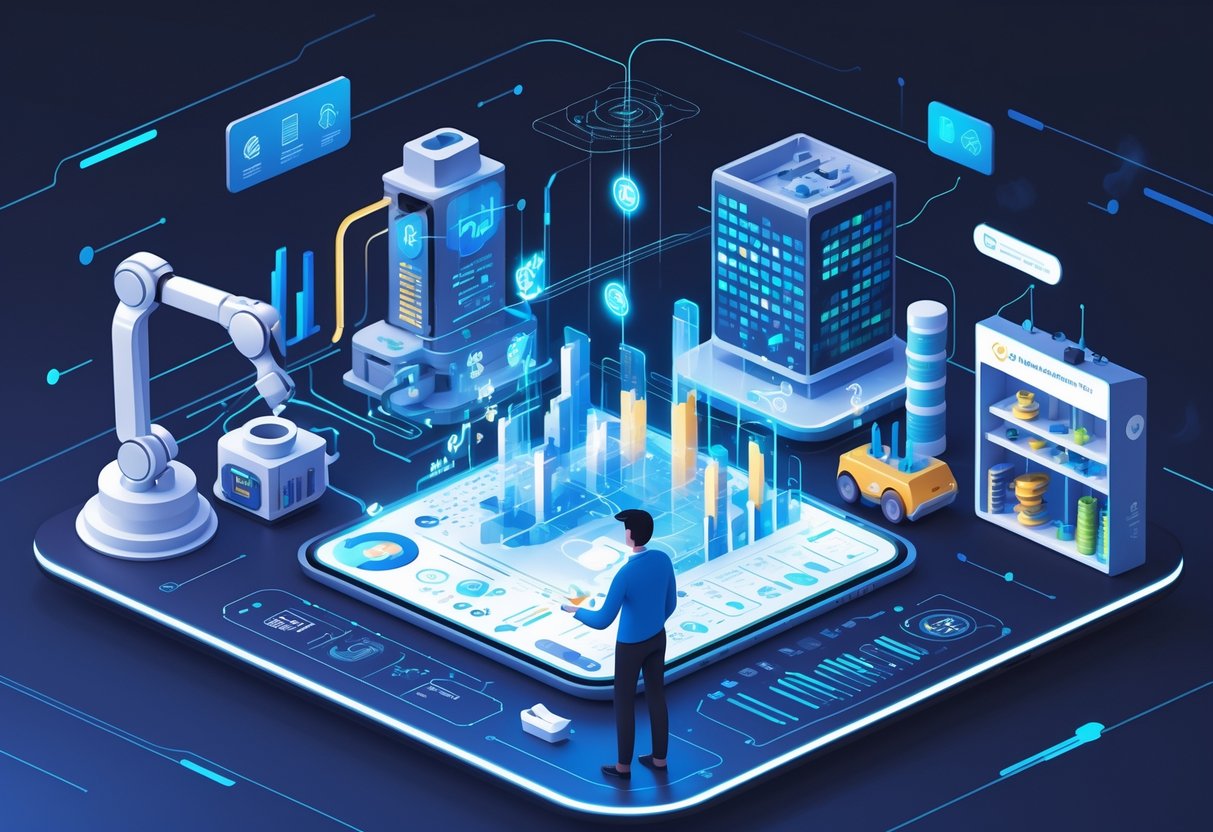
Analytics engineers are implementing generative AI solutions across multiple sectors, with real-world applications spanning from healthcare to finance. Each industry presents unique opportunities for AI-driven data analysis and customer insights.
E-commerce and Customer Experience
E-commerce companies use generative AI to create personalized product recommendations and customer service responses. Analytics engineers build systems that generate product descriptions, analyze customer feedback, and predict buying patterns.
Key Applications:
- Personalized content creation for product pages and marketing emails
- Chatbot responses that handle customer inquiries automatically
- A/B testing scenarios generated for website optimization
The technology helps create synthetic customer profiles for testing new features. These profiles contain realistic shopping behaviors without using real customer data.
Analytics engineers develop models that generate product reviews and ratings to test recommendation algorithms. This approach speeds up the development process significantly.
Many platforms now use AI to create dynamic pricing strategies. The systems analyze competitor data and generate optimal price points in real-time.
Financial Services and Synthetic Data
Financial institutions rely on generative AI to create synthetic datasets for model training and regulatory compliance. Analytics engineers generate realistic transaction data that mimics real patterns without exposing sensitive information.
Primary Use Cases:
- Fraud detection training using synthetic transaction patterns
- Risk modeling with generated market scenarios
- Compliance testing through artificial customer data
Banks generate synthetic credit histories to test lending algorithms. This data helps identify potential biases in loan approval processes.
Investment firms create artificial market conditions to stress-test trading strategies. These scenarios include extreme market events that rarely occur in real data.
Analytics engineers build systems that generate financial reports and summaries. The AI processes complex data and creates readable insights for stakeholders.
Healthcare Applications
Healthcare organizations use generative AI to create synthetic patient data for research and system testing. Analytics engineers develop models that generate realistic medical records while protecting patient privacy.
Medical Applications:
- Synthetic patient records for software testing
- Drug discovery simulations using generated molecular data
- Treatment outcome predictions based on artificial case studies
Hospitals generate synthetic imaging data to train diagnostic algorithms. This approach addresses data shortage issues in rare disease research.
Analytics engineers create models that generate treatment protocols based on patient symptoms. These systems help standardize care across different facilities.
The technology produces synthetic clinical trial data for pharmaceutical research. This data helps researchers test hypotheses before conducting expensive real-world studies.
The Future of Analytics Engineering in the Age of Generative AI

Analytics engineers will face significant changes as generative AI transforms data processing workflows and enables natural language interactions with complex datasets. These technologies will integrate seamlessly with existing analytics frameworks while making data exploration accessible to non-technical users.
Integration With Advanced Data Analytics
Generative AI creates new opportunities for analytics engineers to build more sophisticated data pipelines. The technology works alongside traditional analytics methods rather than replacing them entirely.
Generative AI can support advanced analytics practice by enhancing existing workflows. Engineers can use AI to automate repetitive tasks like data cleaning and transformation.
Key integration areas include:
- Automated code generation for SQL queries and data transformations
- Real-time pipeline monitoring and debugging assistance
- Synthetic data generation for testing and model training
- Enhanced predictive modeling capabilities
Analytics engineers must learn to work with AI-powered tools that generate insights automatically. Learn more about analytics engineering and data workflow optimization.
The technology helps engineers scale their impact across organizations. They can focus on strategic decisions while AI handles routine data processing tasks.
Empowering Intuitive Data Exploration
Generative AI makes data exploration accessible through natural language interfaces. Analytics engineers must design systems that support conversational queries from business users.
Users can ask questions in plain English instead of writing complex SQL statements. The AI translates these requests into proper database queries and returns formatted results.
Benefits of intuitive exploration:
- Faster time to insights for business stakeholders
- Reduced bottlenecks in data request workflows
- Self-service analytics capabilities for non-technical users
- More collaborative data discovery processes
Read about data augmentation and synthetic data generation in analytics engineering.
The technology also helps identify patterns that humans might miss. It can process vast amounts of information and suggest new analytical approaches.
The Role of Tools Like aidin
Specialized AI tools are emerging to support analytics engineering workflows. These platforms combine generative AI capabilities with traditional data processing functions.
Modern tools provide code assistance, automated documentation, and intelligent error detection. They help engineers write better queries and troubleshoot issues faster.
Tool capabilities include:
- Natural language to SQL translation
- Automated data quality monitoring
- Intelligent schema suggestions
- Performance optimization recommendations
Analytics engineers need training on these new platforms to maximize their effectiveness. The tools require understanding of both AI capabilities and data engineering principles.
Integration with existing tech stacks remains crucial for adoption success. Tools must work seamlessly with current databases, visualization platforms, and workflow management systems.
Frequently Asked Questions

Analytics engineers face specific challenges when integrating generative AI into their workflows. These questions address practical concerns about data modeling impacts, skill requirements, workflow optimization, and ethical implementation considerations.
What are the implications of generative AI for data modeling and analysis?
Generative AI transforms how analytics engineers approach data modeling by creating synthetic datasets that mirror real-world patterns. Engineers can now generate data to train models when original data is limited or sensitive.
The technology enables automatic schema generation and relationship mapping. This reduces the time engineers spend on manual data structure design.
Generative AI also improves model validation through synthetic test data creation. Engineers can test edge cases without waiting for real-world scenarios to occur.
Data quality assessment becomes more robust with AI-generated comparison datasets. Engineers can identify anomalies and inconsistencies more effectively.
How can analytics engineers leverage generative AI to enhance data quality and insights?
Engineers use generative AI for enhanced preprocessing and augmentation of data. The technology automatically cleans messy datasets and fills in missing values with statistically appropriate data.
Pattern recognition improves significantly with generative models. Engineers can identify trends and correlations that traditional methods might miss.
Automated report generation saves hours of manual work. AI creates summaries, visualizations, and insights from complex datasets without human intervention.
Data validation becomes more accurate through synthetic benchmarking. Engineers compare real data against AI-generated examples to spot quality issues.
What skills are necessary for analytics engineers to effectively utilize generative AI technologies?
Engineers need strong prompt engineering abilities to communicate effectively with AI models. This involves crafting precise instructions that produce desired outputs.
Understanding of machine learning fundamentals becomes essential. Engineers must grasp how generative models work to implement them properly.
Programming skills in Python and SQL remain critical for integrating AI tools into existing workflows. Engineers also need experience with API integration and model deployment.
Data governance knowledge grows in importance. Engineers must understand privacy regulations and ethical AI practices when working with generative systems.
In what ways does generative AI streamline the analytics workflow?
Automating tasks related to analytics eliminates repetitive manual work from daily routines. Engineers can focus on strategic analysis instead of data preparation tasks.
Code generation speeds up development cycles significantly. AI creates SQL queries, Python scripts, and visualization code based on natural language descriptions.
Documentation becomes automatic through AI-powered tools. Models generate explanations of data transformations and analysis methods without manual writing.
Quality assurance improves through automated testing. AI generates test cases and validates data pipeline outputs continuously.
How do generative AI algorithms impact the decision-making process within businesses?
Predictive analytics capabilities allow businesses to forecast outcomes with greater accuracy. Decision-makers receive more reliable projections for planning purposes.
Real-time insights generation enables faster response to market changes. Executives can adjust strategies based on current data rather than historical reports.
Scenario modeling becomes more sophisticated with AI-generated possibilities. Businesses can explore potential outcomes before making major decisions.
Risk assessment improves through pattern recognition in large datasets. Companies identify potential problems before they impact operations.
What are the ethical considerations for analytics engineers when implementing generative AI solutions?
Data privacy protection requires careful handling of sensitive information throughout the AI pipeline. Engineers must implement safeguards to prevent unauthorized access or data exposure.
Bias mitigation becomes a critical responsibility when training generative models. Engineers need to identify and correct discriminatory patterns in training data.
Transparency in AI decision-making helps maintain trust with stakeholders. Engineers should document how models make predictions and what data influences outcomes.
Model explainability ensures that business users understand AI-generated insights. Engineers must provide clear explanations of how conclusions are reached.
Human oversight remains necessary even with automated systems. Engineers should establish review processes to catch errors or inappropriate outputs.

